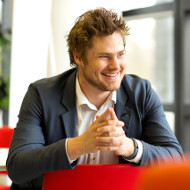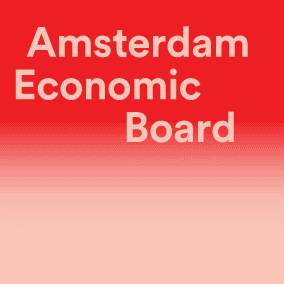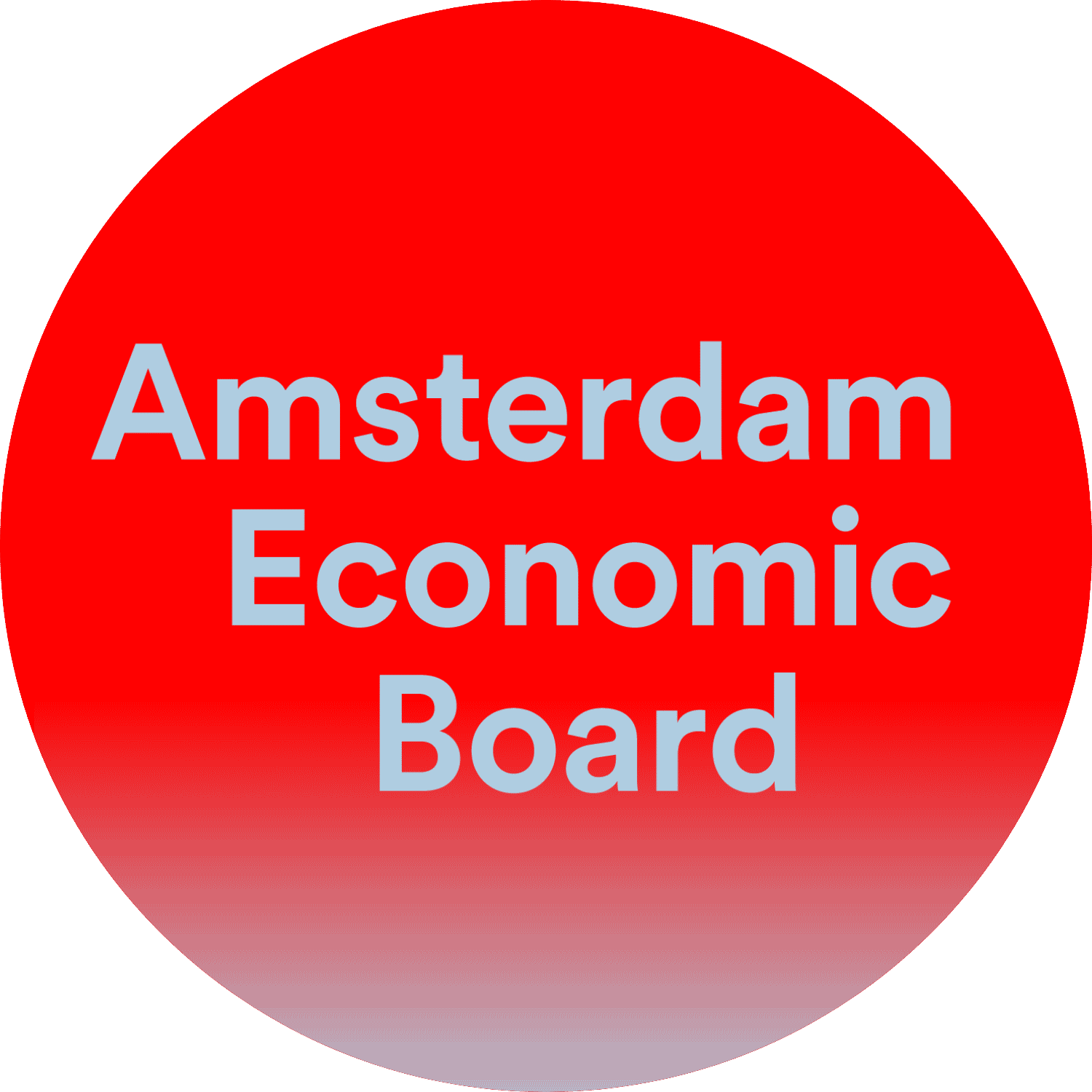Toekomstplannen voor Tada
De kracht van Tada is dat het uitgaat van waarden. Het maakt dat veel mensen zich er in kunnen vinden. Maar tegelijkertijd zijn ethische waarden ook abstract. Natuurlijk willen we een digitale stad ‘van en voor iedereen’. Maar hoe geef je dat vorm in de praktijk? Aan de praktische toepassing wordt al langere tijd gewerkt, bijvoorbeeld door de gemeente Amsterdam. En nu is het tijd voor vervolgstappen om Tada verder te concretiseren. Daarvoor wordt ingezet op meer uitwisseling en samenwerking tussen partijen die Tada onderschrijven.
Willem Koeman van de Amsterdam Economic Board en Aik van Eemeren van het Chief Technology Office (CTO) van Amsterdam vertellen in dit dubbelinterview over de toekomst van Tada.
“We hebben recent een aantal workshops gehouden waarin de toekomst van Tada centraal stond”, zegt Koeman, lead digitale connectiviteit bij de Board. “Tada is in 2017 begonnen met een aantal bijeenkomsten. Een diverse groep mensen is toen samen tot zes waarden gekomen die gelden voor de digitale stad. In 2018 is Tada opgenomen in het Coalitieakkoord van Amsterdam. De vraag is nu, hoe houd je momentum? Wat is de extra waarde die Tada kan toevoegen?”

Aik van Eemeren
Van Eemeren, Lead Public Tech bij het CTO, vult aan: “Andere steden zien Amsterdam als voorbeeld. We hebben met verschillende partijen samen bepaald wat de gezamenlijke waarden zijn. Dat is de kracht van de Tada. Het is niet van de gemeente. Het is van alle partijen in de stad. En het gaat uit van intrinsieke motivatie: welke samenleving willen we zijn? Maar er is nog veel te doen in de implementatie. Want je kan niet anoniem door stad en er komen elke dag camera’s bij.”
Waardenuitwisseling binnen het Tada platform
De kracht van Tada is dat het door verschillende partijen wordt onderschreven. Die kracht wordt nu ingezet in het verder concretiseren van de Tada waarden. Van Eemeren en Koeman beschrijven hoe Tada meer wil gaan werken vanuit een platformvisie. Tada als platform waarin iedereen die de Tada waarden onderschrijft deelnemer is. Door onderlinge samenwerking kunnen deelnemers elkaar versterken in het toepassen van Tada.
Koeman: “We hebben gekeken naar wie er in het Tada netwerk actief is en welke rollen ze vervullen. Er werden negen rollen geïdentificeerd waaronder aanjagers van het debat, ondernemers, onderwijs en beleidsmakers. Vervolgens hebben we twee rollen centraal gezet: de ondernemer en de inkoper. Aan de ene kant heb je ethische technologie entrepreneurs die alternatieven bieden op de status quo. Aan de andere kant heb je inkopers die verantwoorde technologie in huis willen halen. Die twee willen we via het Tada platform gaan koppelen. Op die manier zorgen we voor waardenuitwisseling binnen het platform.”
Van Eemeren: “Je kunt denken aan pakken melk. Daarvan zijn verschillende soorten op de markt. Je hebt fair trade en biologisch en dat staat duidelijk aangegeven. Zo’n soort stempel is er niet voor technologie. Dus als je ondernemer bent en je hebt een verantwoorde sensor ontwikkeld, hoe draag je dat dan uit? En als je inkoper bent en hebt besloten dat je verantwoorde data meeneemt in je inkoopbeleid, welk product of toepassing koop je dan? Rondom Tada zitten mensen en partijen die oplossingen of deeloplossingen hebben. Die mensen willen we bij elkaar brengen.
Problemen identificeren
Koeman: “We zijn gaan onderzoeken tegen welke problemen ondernemers en inkopers aanlopen. Voor ondernemers is zichtbaarheid een probleem. Ze passen de waarden toe in hun producten maar hoe laten ze dat zien aan de buitenwereld? Voor de inkoper is het een uitdaging om draagvlak te vinden binnen de organisatie. Want stel dat de verantwoorde keuze betekent dat er nieuwe systemen moeten komen. De aanschaf kost geld en medewerkers moeten hun kennis bijspijkeren. Het moet allemaal anders maar daarvan wordt het niet per se efficiënter, goedkoper, sneller of makkelijker. Daar wringt schoen voor beide partijen. De verandering brengt een andere waarde: transparantie over je data gebruik en eigenaarschap. Je borgt maatschappelijke waarden in je systemen. Daar kan iedereen zich in vinden maar het moet wel betaald worden door de organisatie.”
“Dit zijn problemen die we hebben geïdentificeerd”, vervolgt Koeman. “En de vraag is: wat kan Tada hierin betekenen. Daarvoor willen we Tada als platform inzetten en partijen bij elkaar brengen. Bijvoorbeeld door ons netwerk aan inkopers te betrekken want die hebben inkoopkracht. Aangehaakte partijen kunnen vanuit hun achtergrond en kennis bijdragen aan het vinden van antwoorden. We willen het proces van oplossingen vinden samen doorlopen. Het is een gemeenschappelijke uitdaging waar we met elkaar aan moeten werken.”
Waarden operationaliseren
Van Eemeren: “We willen de Tada waarden operationaliseren en toepassen. Het helpt om concrete producten neer te zetten en die te schalen. Stel je hebt een product waarover je het met elkaar eens bent dat het voldoet aan de Tada waarden. Via het platform kan je zo’n product dan een duwtje in de rug geven.”
Koeman: “Een voorbeeld is de druktemeter op het Marineterrein. Met behulp van camera’s wordt gemonitord of het niet te druk wordt op het terrein. Het systeem is samen met Tada ontwikkeld met verantwoord datagebruik in gedachten. De beelden worden vervaagd zodat mensen niet herkenbaar zijn. Het videomateriaal wordt alleen gebruikt om te tellen en daarna gewist. Het is mooi dat er zo’n systeem is op het Marineterrein maar hoe breng je het naar de Floriade? Dan maak je de stap naar schalen. Je kan het Tada platform inzetten om partijen bij elkaar brengen.”
Het Tada platform komt er niet vanzelf, benadrukken Van Eemeren en Koeman. “Het mooie van zo’n platform is dat iedereen kan aansluiten”, zegt Van Eemeren. “Maar dat is tegelijk de zwakte want daarmee is het platform van niemand.” Koeman vult aan: “Het is nu zo dat de Board en de gemeente Amsterdam dit faciliteren maar we gaan het niet in ons eentje trekken. Idealiter ontstaat er momentum en bereiken we een punt waarop het Tada platform gemeenschappelijk gedragen wordt.”
Over het manifest ‘Tada – Clear about data’
De beloftes van het gebruik van data en nieuwe technologieën zijn groot; onze steden worden groener en leefbaarder, gezondheidszorg effectiever en onderwijs toegankelijker. Maar wat gebeurt er met alle data en wie is er uiteindelijk verantwoordelijk voor? In de manifest Tada bevat waarden die zouden moeten gelden in digitaal verantwoorde steden.
Foto: Fotoborden Aan Unsplash. / Vertaler: Joy Philips
26 januari 2021
Meer weten over
Neem contact op
Blijf jij ook op de hoogte?
8x per jaar nieuws en events uit de regio: schrijf je in voor de Board Update nieuwsbrief
Deel dit artikel
Wil je op de hoogte blijven?
Volg ons dagelijks op LinkedIn en schrijf je in voor de Board Update nieuwsbrief.
Lees ook deze berichten
- Op 14 en 15 oktober kwamen de boardleden van Amsterdam Economic Board samen voor ...
- Op maandag 13 oktober organiseerden we vanuit het Innovatielab een Deep Dive over ...
- Als we innovatie en onderzoek in de gezondheidszorg meer richten op vrouwen, ...


